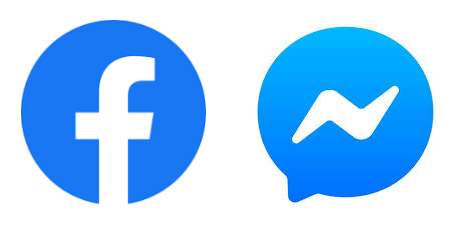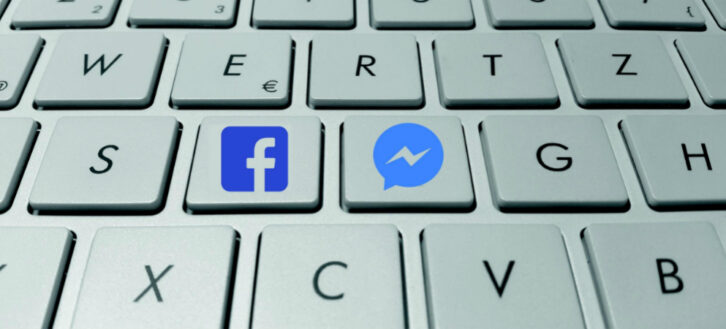Back in the day, Facebook Messenger was used to keep in touch with friends and family. Nowadays, the platform is becoming one of the most powerful digital marketing tools for businesses.
During the F8 Conference last May, it was revealed that Facebook Messenger has 1.3 billion monthly users. Thus, it will not be surprising to know that Facebook users and businesses exchange about 200 billion messages per month on the platform.

No wonder it is used heavily as part of the online customer support, for customer engagement, and for building online brand presence.
If you are yet to take advantage of Facebook Messenger for your business, here are some smart marketing hacks that you need to know:
1. Have a Welcome conversation
In a brick-and-mortar store, store owners and staff greet their customers. The same thing should happen on your online store or your business’ Facebook page.
Think of Facebook Messenger as a live chat feature. And as posted on AmazeLaw, “Having a way to instantly communicate with visitors can increase your firm’s intake of new clients.”
A welcome conversation allows you to automatically greet a customer for the first time when he connects with you via Facebook. It is also a great way to guide customers on how they can find what they are looking.
The good about Messenger greetings on Facebook is that you can customize it. It will appear when someone initiates a conversation on your page for the first time.
To customize your Messenger Welcome greeting, just follow the steps below:
- Open your Facebook page. At the top of the page, click Settings.
- In the left column, click Messaging.
- Select On next to “Show a Messenger Greeting”.
- Click Change to edit and customize your message.
- Click Save.
Your page’s Messenger greeting will appear prior to a conversation. This will make a customer feel that you have an exemplary online customer support. As a result, customer experience will improve which will make them more likely to come back and support your business.
2. Use the messenger auto reply
Is it really okay to set up an auto reply on your Facebook Messenger? Yes, it is.
Come to think of if, your online presence is up 24/7 but not you.
As Lisa Vasallo points out, “In a digital world where all seem to be more available and some consumers expect a 24 hour service, it’s important to remember that we can’t all be on social media all of the time.”
You may have customers who will contact you via Messenger anytime. If no one replied immediately, what do you think will they feel? This is where Messenger auto-reply can help.
In fact, doing so can help you earn the green “Very Responsive to Message” badge, which can convince people to contact you.
Here’s how you can set up yours:
- Open your Facebook page. At the top of the page, click Settings.
- In the left column, click Messaging.
- Below “Response Assistant” you will see “Send Instant Replies.” Switch the toggle to On.
- Click Change to edit and customize your message.
- Click Save.
What’s cool about this feature is that you can customize it to include a person’s first name. Moreover, the Messenger Auto Reply is best used when you (or your online customer support) will be unavailable.
When crafting an auto reply, make sure that you have these content elements:
- Apologize that you are out of reach at the moment
- Tell when you are most likely to get back to the customer (e.g. “We will get back to you as soon as possible.”)
- Let the customer know how he/she can best contact you (i.e. redirect them to your customer hotline)
3. Build powerful chatbots
Kayla Sloan defines chatbot as “a computer program that can interact with humans over the internet.”

You can choose to build a chatbot of your own or you can use bot platforms that can easily integrate with your business’ Facebook Messenger via API.
Here are three reasons you should build a powerful chatbot for your business:
Save Time
Chatbots allow you to create pre-determined replies depending on your customers’ frequently asked questions. That way, you can provide relevant responses immediately.
Save Money
Depending on the complexity of your chatbot, building one is more cost-effective than hiring a first tier chat support. So instead of putting someone on payroll to answer simple customer queries, you can use a chatbot instead.
You can also instruct users one how to best contact your support team for the more complicated ones.
Improve Customer Support
When you have a chatbot integrated with your Messenger, users no longer need to wait for a reply. They can receive it in an instant, or find out who to contact for their inquiries. Not to mention that chatbots are available anytime, anywhere.
Thus, they are available to help a customer complete a sale. This can have a positive effect on your business’ revenue.
4. Segment your users
If your chatbot is up and running, you can best leverage it by segmenting your users. In fact, there are chatbots that allow you to save user information and then build a “list of subscribers.”
Why should you segment your users? Well, it is a great way to understand your customers and provide a customized chat experience to them.
Keep in mind that the Facebook Messenger is a two-way communication tool. Which means that you should allow them to interact with your chatbot by letting them choose their own adventure. You can do this by adding navigation menus or quick-reply buttons (i.e. Yes and No buttons).
From there, you can use your chatbot to ask a question about the user. Something that can help you find the best segment for an individual user. For example, “Would you like to receive updates when we release a new product?”
Lastly, send out a personalized broadcast (or chat blast) based on your segments. That way, you will know that you are sending relevant information and are less likely to annoy your subscribers. Moreover, you have a better chance of pushing your subscriber down the conversion funnel and turn him into a paying customer.
5. Chat blasting
In relation to #4, one of the best ways that you can leverage your Facebook Messenger and your chatbot’s segmented list is to send a chat blast.
Also known as “broadcast,” chat blasting is like email blasting or sending out a newsletter via your subscribers’ Facebook Messenger. But unlike email newsletters, chat blasting can yield better results.
In fact, Larry Kim of MobileMonkey shared that “Chat blasts average 70 – 80% open rate in the first hour because Messenger chat is the engaging and familiar channel preferred by a generation of mobile internet users.”
In addition, chat blasts can have an average of 20% click through rate. That’s because users will be notified of your message instantly, which means that it will not drown in a sea of emails. You are less likely to be blocked as spam either.
However, it is important to be mindful of your chat blasts. Here are Facebook messaging best practices that you need to know:
- Keep your chat blast short and simple.
- Only use high-quality images.
- Test how your images will look like when it appears in the message bubble.
Kim also advises that you inform your subscribers how they can unsubscribe. Some chatbot platforms allows you to automatically unsubscribe users who would reply “STOP.”
Otherwise, you will be put “in the donkey shed with Facebook.”
6. Make drip campaigns on Messenger
Another great thing that you can do using a chatbot platform is creating a drip campaign on Messenger.
Your chatbot platform will allow you to automatically send scheduled messages to your subscribers. Imagine sending out an online course material regularly via Messenger.
Just like in email marketing, you only need to set up your drip campaigns on Messenger once. And depending on how user-friendly your chatbot platform is, as well as how tech savvy you are, creating a drip campaign might only take you 15 minutes to set up.
When is the best time to send a drip campaign?
You can use this if you have an online course. Instead of sending this week’s lessons via email, you can send it through your online students’ Messenger. After all, they are most likely on their Messenger than on email.
You can also use a drip campaign to send scheduled reminders leading up to an event, such as a webinar.
If you are running an ecommerce business, drip campaigns are a great way to send out teasers for an upcoming launch of a new product.
7. Send event invites and information
Speaking of using drip campaigns to send out reminders leading up to an event, do you know that it is best to send out event invites via Facebook Messenger?
In fact, HubSpot saw a significantly higher response rate than email when they used Facebook Messenger to promote an event. That’s because people are more available on Messenger than on email.
Here’s how you can do the same with the help of your chatbot platform:
- Allow users to sign up to your event via Facebook Messenger
- Send a reminder to your attendees a few days prior to the event. You may also include links that allows them to add an event reminder on their calendar.
- After the event, ask your attendees if they enjoyed it. This can be a survey, a Facebook poll, or just let them reply to your message.
If you are organizing a big event that will happen for a couple of days (i.e. a three-day conference), you can leverage your chatbot platform to keep your attendees engaged.
What you can do is to send them a schedule of today’s events. You can also inform them if some of your event sponsors, presentors, or exhibitors have something cool to offer to attendees.
8. Combine Messenger Bot to your Facebook Live
According to Natasha Takahashi of School of Bots, “Facebook Messenger bots are an incredibly powerful tool for engaging your existing audience and new leads.”
It is so powerful that you can team it up with your Facebook Live.
There are chatbot platforms that allows you to connect your Messenger bot to your Facebook Live using the Comments feature. This combo is best used to engage your viewers.
You can do this by announcing that you are giving some freebies such as a PDF guide.
When someone comments on your Facebook Live, he will receive a message and your chatbot can take it from there. This includes sending out the free PDF guide, capturing his user information, and walking him through the sales funnel.
Since the user is already engaged with your brand via Facebook Messenger, you can then send a follow up sale offer. For example, a few days after you send out the freebie, you can run a Facebook Messenger broadcast inviting people to enroll to your online course.
That way, you can boost your Facebook Live engagement, increase the number of your chatbot subscribers, as well as your email subscribers.
Moreover, depending on the user’s level of engagement with your brand (i.e. those who downloaded your PDF guide AND enrolled to your online course vs. those who downloaded your PDF guide only), you can easily determine whether they are in the conversion funnel. That way, you can plan your Messenger marketing campaign accordingly.
9. Run Facebook ads on Messenger
If you have the budget, you may consider running Facebook Messenger ads. In fact, you can implement it in two ways:
A. From Facebook Messenger to Your Landing Page
Run a Facebook Messenger ads, and make sure that your ad will redirect users to your landing page. This is ideal if you want to build brand awareness and drive website traffic.
B. Let Users Send You a Message
You can run a Facebook Messenger ad with a “Send Message” as CTA button. This enables users to connect with you via Messenger in an instant. From there, you can engage them with the help of your chatbot.
10. Click to messenger ad
Larry Kim defines Click to Messenger ad as “a Facebook ad where the conversion action is ‘Send Message’.” This is the ad type that you will use if you would like users to send you a message (see point #9).
Clicking the CTA button will open a user’s Messenger app, allowing him to contact you in an instant. And if you are using a chatbot, that means you can capture his user information and leverage it for marketing purposes.
As more and more people use instant messaging apps such as Facebook Messenger, your potential to expand your business’ reach and increase revenue grows. Thus, it is best that you experiment and discover how you can use Facebook Messenger to your business’ advantage.


